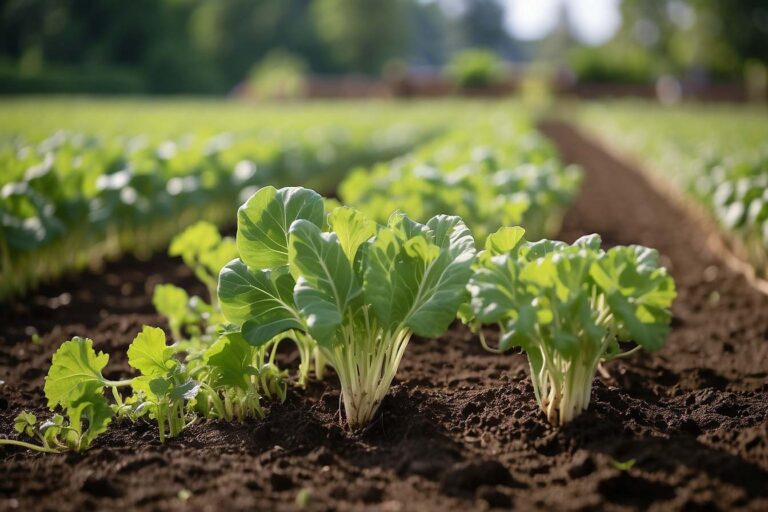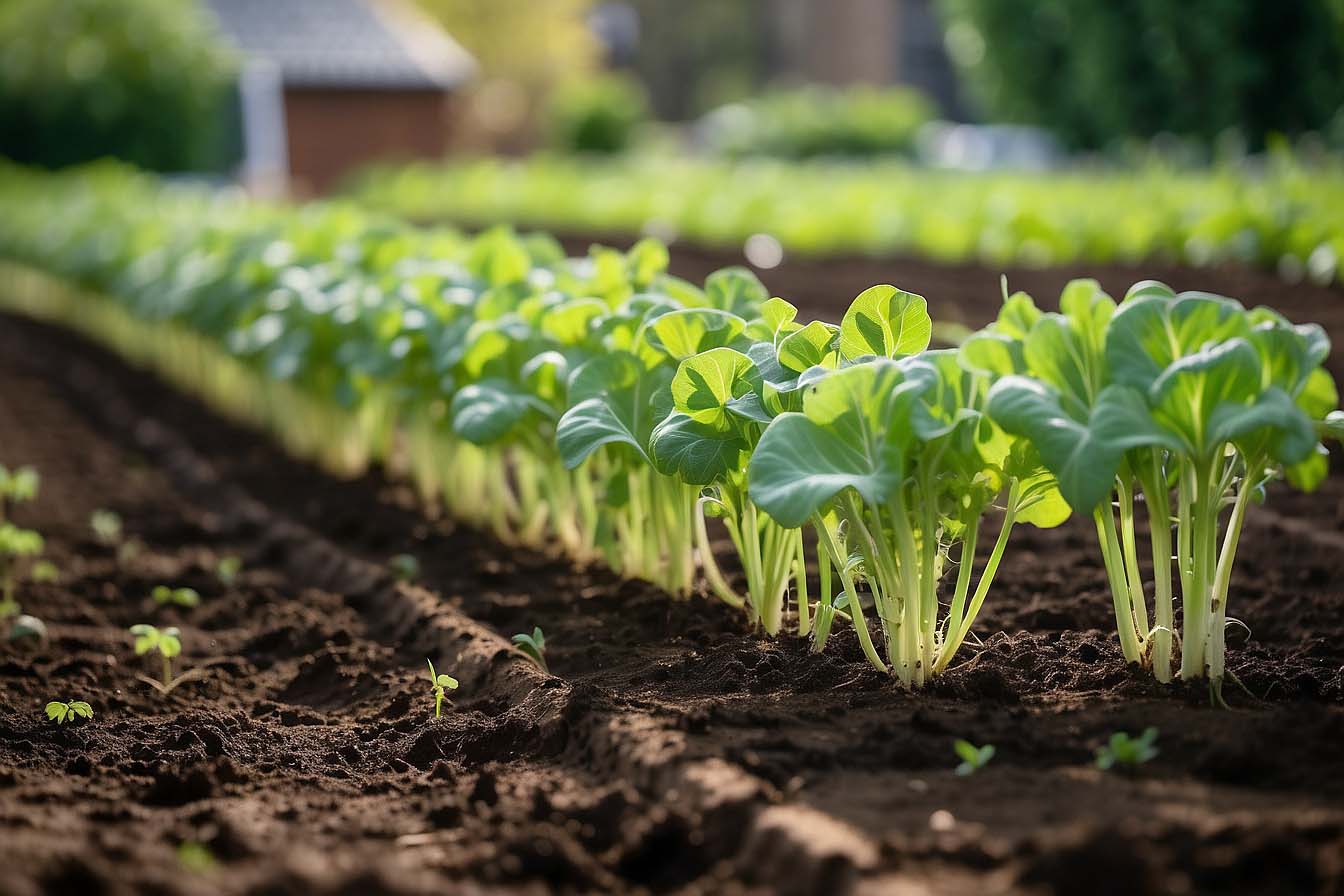Pros of growing turnips include their rapid growth and low maintenance, while cons involve susceptibility to pests and limited climate adaptability. Turnips thrive in cool climates but struggle in heat.
Growing turnips presents a valuable opportunity for gardeners and small-scale farmers. These root vegetables require relatively simple care, making them an excellent crop for beginners. They mature quickly, often ready for harvest within two months, and can even be grown as a fall crop after earlier vegetables have been cleared.
The Popularity of Turnips in Agriculture

Turnips have carved out a noteworthy niche in agriculture, standing the test of time from ancient fields to modern farms. These robust root vegetables are not just a culinary staple; they are a key player in the agricultural world due to their versatility and ease of cultivation.
Cultivation History
The journey of the turnip through history is as rich as the soil it grows in. Turnips have been feeding civilizations for centuries, with mentions dating back to Greek and Roman times. This hardy crop has not only survived but thrived, thanks to its adaptability and simple farming needs. Over time, turnips have played a dual role – feeding both people and livestock, and their resilience has made them a fixture in various cultures and cuisines.
Current Trends in Turnip Farming
In the contemporary agricultural scene, turnips are experiencing a quiet renaissance. Farmers are rediscovering the benefits of these root veggies, not just for their nutritional value but also for their role in sustainable farming practices. With new varieties being developed for better flavor and yield, turnips are showing up in more markets and on tables around the world. They’re also integral to crop rotation, preventing soil depletion and reducing pest infestures.
The cultivation of turnips is being optimized; farmers use technology for precision farming, ensuring efficient turnip production. The market for turnips is expanding, driven by a growing demand for healthy, locally-sourced produce. Organic turnip farming is on the rise, appealing to consumers interested in eco-friendly and sustainable food choices.
| Year | Trend | Impact |
|---|---|---|
| 2021 | Heirloom Varieties | Increased Biodiversity |
| 2022 | Organic Farming | Eco-Friendly Practices |
Nutritional Benefits of Turnips
Turnips are powerhouses of nutrition, packed with essential vitamins and minerals. This root vegetable can bring a wealth of health benefits to your diet. Let’s delve into the specifics of what makes turnips such a valuable addition to your meals.
Vitamins and Minerals Profile
Turnips are rich in important vitamins and minerals. They contain vitamin C, an antioxidant that helps protect your body. They also have vitamin K, which is key for bone health. Turnips offer B vitamins too, like niacin, thiamin, and folate, which are crucial for energy and cell growth. For minerals, turnips provide calcium, potassium, and magnesium. These minerals support heart health and strong bones.
| Vitamin/Mineral | Benefit |
|---|---|
| Vitamin C | Boosts immune system |
| Vitamin K | Improves bone density |
| B Vitamins | Enhances energy and metabolism |
| Calcium | Strengthens bones |
| Potassium | Regulates blood pressure |
| Magnesium | Supports muscle and nerve function |
Dietary Fiber and Its Advantages
Dietary fiber in turnips is great for digestion. It helps keep your gut healthy and can prevent constipation. Fiber also benefits your heart. It does this by helping to lower cholesterol levels. There is more fiber in the greens of turnips, so don’t throw them away. Incorporating turnips into your meals can help with weight management as well, since fiber-rich foods make you feel full longer.
- Improves digestive health
- Prevents constipation
- Lowers cholesterol
- Aids in weight management
- Keeps you feeling fuller for longer
Learn more: Where Did Turnips Come from
Challenges in Turnip Cultivation
Many farmers enjoy growing turnips, but they face some challenges. These are tough problems. Let’s talk about them.
Pest and Disease Management
Turnips attract pests and diseases. This can harm crops. You need good plans to stop this.
- Flea beetles eat leaves, making holes.
- Aphids suck plant juice and spread viruses.
- Clubroot is a soil fungus that hurts roots.
Using safe sprays helps. Crop rotation does too.
Soil and Climate Requirements
Turnips are cool-weather veggies. They like 45°F to 75°F. Anything else is bad for them. Here’s a quick look at soil and climate needs:
| Soil Type | pH Level | Water Needs |
|---|---|---|
| Well-draining | 6.0 – 7.5 | Regular |
Plant in early spring or late summer. Make sure the soil is rich and not too wet.
Economic Aspects of Turnip Production
Exploring the economics of turnip production is crucial for farmers and investors alike. Understanding the costs and potential profits involved can make or break the success of growing this versatile vegetable.
Cost of Production and Potential Profitability
Growing turnips involves several costs. Let’s look at the key investments:
- Seed Cost: This varies depending on the turnip variety.
- Land Preparation: Involves plowing and fertilization.
- Labour: Planting, harvesting and post-harvest handling.
- Watering: Crucial for crop growth yet adds to the expense.
- Pest Management: Protects crops but increases costs.
To calculate profitability, farmers subtract these costs from their sales. Successful turnip farming could yield significant profits, especially if the turnips are of high quality and the harvest is abundant.
Market Demand and Pricing Factors
Market demand dictates turnip prices. Here’s what influences this demand:
| Factor | Effect on Prices |
|---|---|
| Seasonality | Prices may rise when turnips are off-season. |
| Competition | Higher competition can lower prices. |
| Quality | Superior quality often fetches higher prices. |
| Consumer Trends | Increasing health trends can boost demand and prices. |
Understanding these factors helps predict potential earnings from turnip crops. Farmers can aim for optimal planting seasons and high quality to maximize their revenue.
Environmental Impact of Growing Turnips
Understanding the environmental impact of growing turnips is crucial. Turnips, a root vegetable, provide both nutritional and economic value. Yet, their cultivation affects our planet. It’s vital to discuss this topic in the realm of sustainability.
Water Usage and Sustainability
Turnips require a moderate amount of water to grow. This impacts regions where water is scarce. Here’s how water needs for turnips measure up:
- Turnips are less thirsty than many crops.
- They can survive on rainfall alone in some climates.
- Drip irrigation cuts water use and helps in dry areas.
Smart water practices ensure turnips grow sustainably. Farmers can reduce the environmental footprint by using water-efficient techniques.
Crop Rotation and Soil Health
Rotating crops is a key part of soil health. Turnips play a role here:
- Growers plant turnips in rotation to prevent soil depletion.
- Turnips break up soil with their deep roots. This helps other plants.
- They reduce pests and diseases that harm other crops.
| Crop | Benefit |
|---|---|
| Turnips | Improves soil structure and health |
| Other Crops | Gain from pest and disease control |
By rotating with turnips, farmers maintain rich, fertile soil. This supports diverse crops and sustainable farming.
Conclusion
Exploring turnip cultivation reveals a balance of benefits and drawbacks. These hardy vegetables offer nutritional value and adaptability. Yet, challenges in growth and taste preferences may deter some gardeners. Ultimately, whether to grow turnips depends on personal goals and palate.
Let this guide inform your garden choices. See all in at Farm Pioneer for knowledge based for Turnips.
